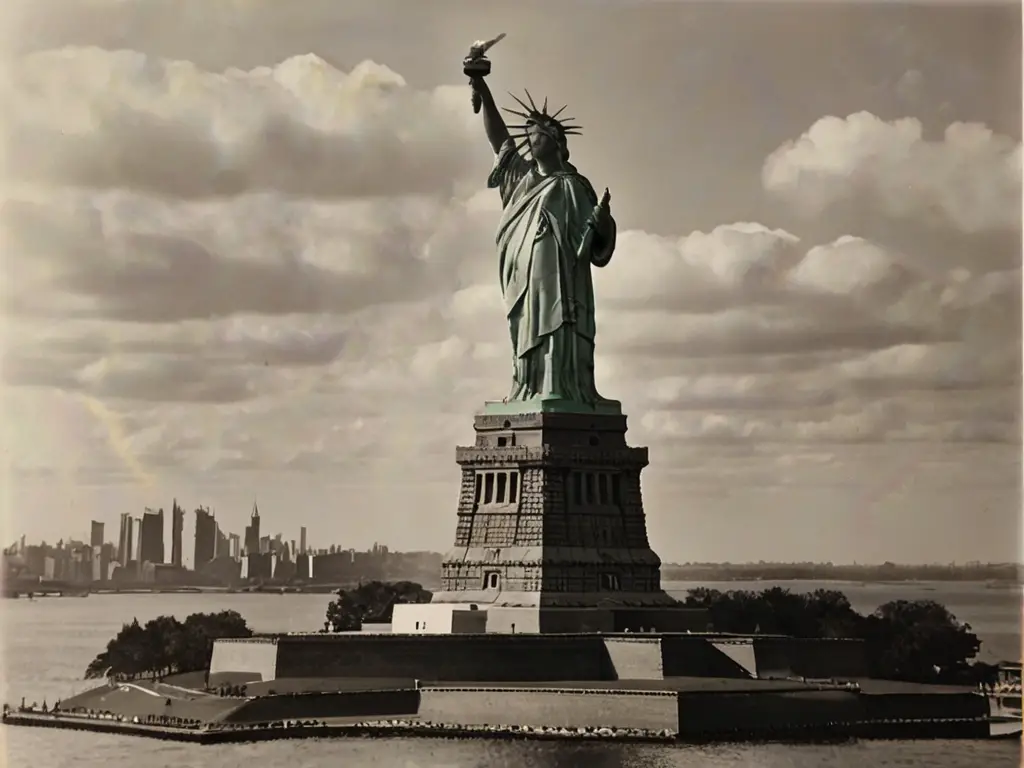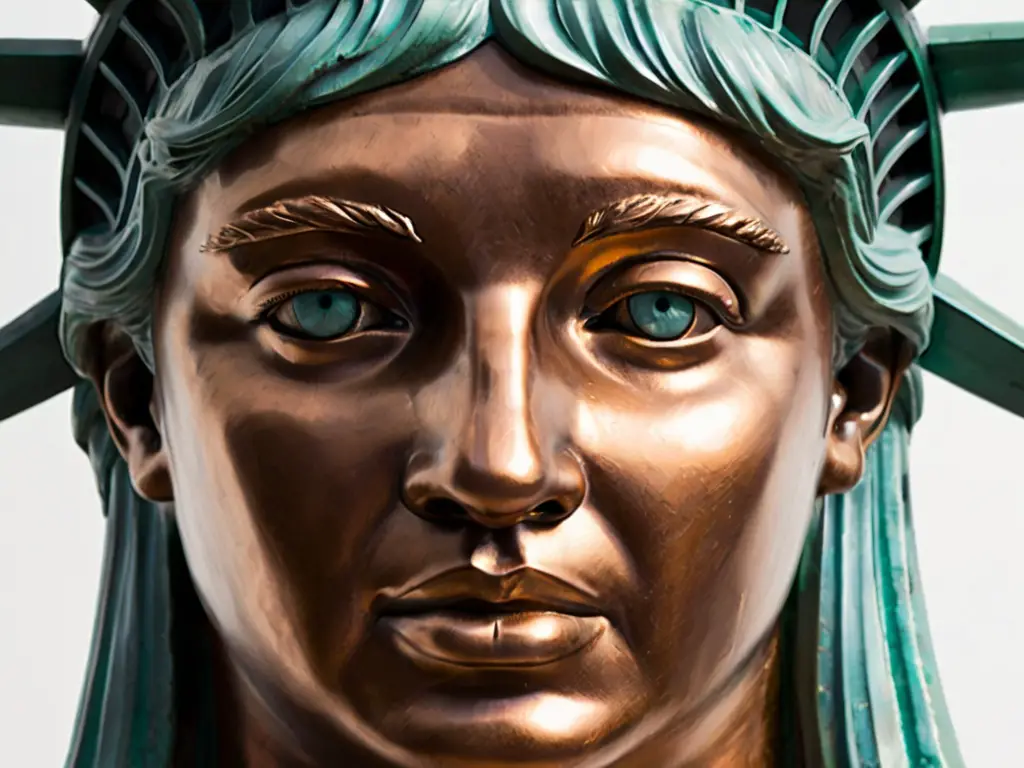When the Statue of Liberty was Copper The Statue of Liberty is one of America’s most iconic symbols. But did you know that when it was first built, it was actually copper? That’s right – the statue wasn’t always the green color we know today.
In fact, it wasn’t even supposed to be green at all. The original plan for the Statue of Liberty was for it to be a shiny, new penny color. However, over time, the copper began to turn green due to exposure to the elements. This process is called “patination,” and it happens when copper reacts with oxygen and moisture in the air. So why didn’t they just paint the statue? Well, they actually did try that at first.
Why was the Statue of Liberty Built
The Statue of Liberty was built in 1886 to commemorate the 100th anniversary of America’s independence. The project was initiated by French intellectual and politician Édouard René de Laboulaye, who hoped that the monument would serve as a symbol of the friendship between France and America.
The statue was designed by French sculptor Frédéric Auguste Bartholdi and its internal structure was engineered by Gustave Eiffel. The Statue of Liberty is located on Liberty Island in New York Harbor and welcomes visitors from all over the world. It has become one of America’s most iconic symbols and is a must-see for anyone visiting New York City.

Credit: www.nationalgeographic.com
Was the Statue of Liberty Original Copper?
Yes, the Statue of Liberty was originally copper. It was designed by French sculptor Frederic Auguste Bartholdi and built by Gustave Eiffel. The statue was a gift from the people of France to the United States in 1886, to commemorate the 100th anniversary of the signing of the Declaration of Independence.
When Did the Statue of Liberty Turn Green?
The Statue of Liberty, originally a shiny brown color, began to turn green around 1900 due to the natural weathering and oxidation of its copper skin. The transformation was gradual and took nearly three decades to complete. By 1920, the statue had entirely turned into the iconic green color we associate with it today. This green coating is known as patina and acts as a protective layer that prevents further corrosion or damage to the copper underneath.

How Long Did the Statue of Liberty Stay Copper?
The Statue of Liberty, a gift from France to the United States, was initially a shiny copper color when it was assembled and unveiled in 1886. However, the statue did not stay copper for long. Within about 20 years, by the early 1900s, it had oxidized and turned into the greenish-blue patina we see today. So technically, the Statue of Liberty stayed copper for approximately two decades before undergoing this natural color transformation due to chemical reactions between metal and air.
Why was the Statue of Liberty Made of Copper?
The Statue of Liberty was designed by French sculptor Frédéric Auguste Bartholdi and built by Gustave Eiffel. The statue was a gift to the United States from the people of France, commemorating the American Declaration of Independence. The Statue of Liberty is made of copper sheets that were hammered into shape and riveted together. It was originally covered in gold leaf, but this has since worn off. The green patina that now covers the statue is caused by the oxidation of the copper.

Was the Statue of Liberty Ever Shiny Copper?
Yes, the Statue of Liberty was indeed shiny copper at one point. When it was first constructed and assembled in 1886, the statue was made of pure copper that shone like a new penny. Over time, however, exposure to the elements caused a chemical reaction on the surface of the statue. This reaction resulted in a green patina or layer that now covers the entire structure. This process took about 30 years to completely cover Lady Liberty and is actually beneficial as it acts as a protective layer against further weathering and damage.
Why was the Statue of Liberty Made of Copper Instead of Silver?
There are a few reasons why the Statue of Liberty was made out of copper instead of silver. For one, copper is cheaper than silver and, therefore, would have been more affordable for the project. Additionally, copper is more durable than silver and thus better suited to withstanding the elements.
Finally, when exposed to air and water, copper develops a green patina that gives it an antique look – something that would have been desired for the statue given its intended meaning as a symbol of America’s long history.
The History of the Statue of Liberty
Frequently Asked Questions [FAQs]
When was the Statue of Liberty made of copper?
The Statue of Liberty, originally constructed in France, was made of copper and completed in 1884.
Why was the Statue of Liberty made of copper?
Copper was chosen as the primary material for the Statue of Liberty due to its durability, malleability, and resistance to corrosion, making it ideal for enduring outdoor exposure.
What color was the Statue of Liberty when it was made of copper?
When first erected, the Statue of Liberty had a bright, coppery appearance, gradually turning green over time due to the natural oxidation process.
How did the Statue of Liberty turn green?
Over the years, the copper exterior of the statue reacted with the elements, particularly oxygen, and moisture, forming a green patina layer known as verdigris, which ultimately gave the statue its iconic green hue.
Was the Statue of Liberty always green?
No, the Statue of Liberty was initially a reddish-brown color, resembling the natural color of copper. However, the gradual formation of the green patina due to
Conclusion
The Statue of Liberty was originally copper, but it wasn’t always the green color that we know today. The statue was built in France and shipped to the United States in 1885. The copper skin was exposed to the elements for more than 30 years, and it slowly turned green due to oxidation.
